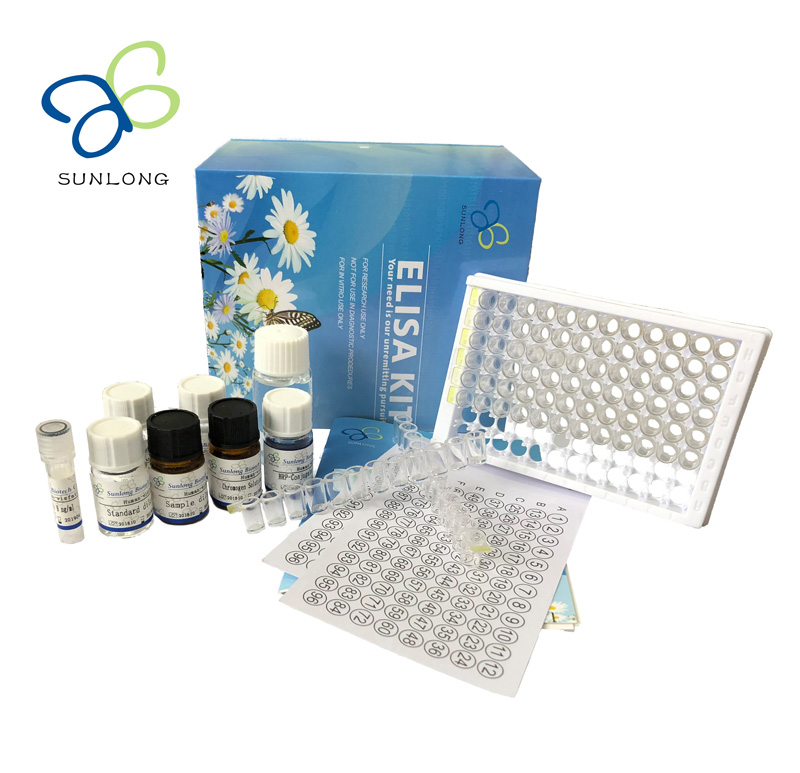Human Serum Ferritin, SF ELISA Kit
Catalog No :
CAS Number :
Brand :
In Stock
Sample Volume: 50ul
Wavelength:450nm
Assay range:20 ng/mL -400 ng/mL
Sensitivity:1 ng/ml
Standard:450 ng/mL
Specifications:
| Application | ELISA-Based Assays |
| Storage Temperature | 2-8°C |
| Product Type | Elisa Kit |
| Product Grade | Molecular Biology |
The Human Serum Ferritin (SF) ELISA Kit is a sensitive and specific assay designed for the quantitative detection of ferritin levels in human serum, plasma, culture media, and other biological fluids. Ferritin is a critical biomarker for iron storage and metabolism, and this kit is essential for research in iron-related disorders and metabolic studies.
Purpose
- Quantification of SF Levels:
- Detect and measure ferritin concentrations in human biological samples to study iron metabolism and related health conditions.
- Sample Compatibility:
- Suitable for human serum, plasma, and other biological fluids.
Principle
The assay employs a Sandwich-ELISA technique for the accurate and reliable quantification of serum ferritin. Below is the process:
- Pre-Coated Plate:
- Microelisa stripplate wells are pre-coated with an antibody specific to SF.
- Sample and Standard Addition:
- Standards and samples are added to the wells, where ferritin in the sample binds to the immobilized antibody.
- HRP-Conjugated Detection:
- A Horseradish Peroxidase (HRP)-conjugated antibody specific to SF is added, forming a sandwich complex with the captured ferritin.
- Washing Step:
- Free and unbound components are washed away to minimize background interference.
- Substrate Reaction:
- TMB substrate solution reacts with HRP, producing a blue color in wells containing SF.
- Stop Reaction and Measurement:
- A stop solution is added, changing the color from blue to yellow. Optical density (OD) is measured at 450 nm using a spectrophotometer.
- Quantification:
- Ferritin concentrations are calculated by comparing OD values to a standard curve.
Key Features
- High Sensitivity and Specificity:
- Detects low levels of SF with minimal cross-reactivity or interference.
- Wide Sample Compatibility:
- Suitable for serum, plasma, culture media, and other biological fluids.
- Quantitative Results:
- Provides precise measurement of SF concentrations using a standard curve.
- Ease of Use:
- Includes pre-coated plates and ready-to-use reagents for a streamlined workflow.
- Reproducibility:
- Ensures consistent and reliable results across multiple experiments.
Kit Components
- Pre-coated Microelisa stripplate.
- Ferritin standards for standard curve generation.
- HRP-conjugated SF detection antibody.
- TMB substrate solution.
- Stop solution.
- Wash buffer.
- Sample diluent.
- Instruction manual.
Applications
- Iron Metabolism Research:
- Study ferritin as a biomarker for iron storage and metabolism.
- Clinical Diagnostics Research:
- Assess SF levels in conditions like iron deficiency anemia, hemochromatosis, and chronic diseases.
- Inflammation Studies:
- Investigate ferritin as an acute-phase reactant in inflammatory conditions.
- Metabolic Research:
- Explore SF levels in metabolic syndrome and chronic diseases.
- Therapeutic Development:
- Monitor ferritin as a biomarker in drug development targeting iron metabolism.
Advantages
- High Accuracy:
- Provides precise and reproducible quantification of SF.
- Convenience:
- Ready-to-use reagents simplify preparation and assay execution.
- Versatility:
- Compatible with various biological sample types.
- Reliable:
- Delivers consistent results for robust data interpretation.
Assay Protocol Summary
- Add standards or samples to the pre-coated wells.
- Incubate with HRP-conjugated SF antibody.
- Wash to remove unbound components.
- Add TMB substrate to develop color.
- Stop the reaction and measure OD at 450 nm.
- Calculate SF concentrations using the standard curve.
Storage and Stability
- Store all kit components at 2–8°C to maintain reagent integrity.
- Avoid repeated freeze-thaw cycles to ensure assay reliability.
The Human Serum Ferritin (SF) ELISA Kit is an essential tool for researchers studying iron metabolism, chronic diseases, and inflammatory conditions. Its precision, user-friendly design, and broad compatibility make it indispensable for clinical and experimental applications.




 0
0
